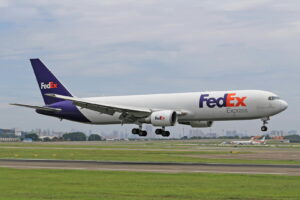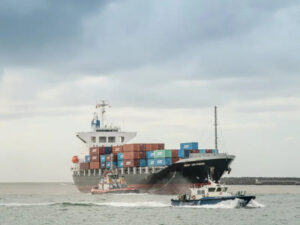
When it comes to international shipping, businesses often face a crucial decision: choosing between air freight and sea freight. Both methods have their unique advantages and are suited for different shipping needs. Understanding the key differences between air freight and sea freight can help you make the right choice for your business, balancing factors like cost, speed, and cargo type.
In this article, we will delve into the specifics of each shipping method, compare their key aspects, and provide insights to help you decide which option suits your logistics needs best.
What is Air Freight?
Air freight shipping refers to the transportation of goods by air, either on dedicated cargo planes or within the cargo hold of passenger planes. This shipping method is renowned for its speed and efficiency, making it the preferred choice for time-sensitive shipments. From small packages to high-value goods, air freight allows businesses to quickly move their products across borders and continents.
Air freight services often include express, standard, and charter options, offering flexibility based on the urgency and nature of the cargo. The ability to deliver goods quickly makes air freight a critical component of global supply chains, especially for industries dealing in perishable goods, electronics, and other high-value items.
What is Sea Freight?
Sea freight, also known as ocean freight, is the transport of goods by sea using cargo ships. Goods are typically packed into standardized containers that are loaded onto vessels, which can carry thousands of containers at a time. Sea freight is a cost-effective solution for shipping large volumes of goods over long distances, making it ideal for bulk shipments such as raw materials, machinery, and consumer goods.
Although sea freight has a slower transit time compared to air freight, its lower cost per unit makes it a popular choice for businesses looking to optimize their shipping expenses. The vast network of ports and shipping routes ensures that sea freight remains a reliable option for global trade.
Check out the Complete Guide to Sea Freight Shipping here.

Key Differences Between Air Freight vs Sea Freight
1. Speed and Transit Time
One of the most significant differences between air freight and sea freight is the speed of delivery.
Air freight is the fastest shipping method available, with transit times typically ranging from 1 to 7 days, depending on the route. This make shipping by air ideal for urgent shipments and perishable goods that need to reach their destination quickly.
In contrast, ocean shipping is considerably slower, with transit times ranging from 7 to 45 days. This longer transit time is suitable for non-urgent shipments where cost savings are more important than speed.
2. Sea Freight and Air Freight Rates
When comparing sea freight and air freight rates, sea freight generally offers a much more economical solution, especially for large shipments.
Air freight charges are significantly higher due to the costs associated with aircraft operations, fuel, and speed of delivery. While air freight costs are calculated based on both weight and volume, sea freight costs are primarily determined by the size of the container, making it more cost-effective for shipping large quantities.
However, for smaller, high-value goods, air freight can offer a balance of speed and cost that shipping by sea cannot match.
3. Cargo Capacity and Volume
Ocean freight has a significant advantage when it comes to cargo capacity. A single cargo ship can carry thousands of containers, making it the preferred option for bulk shipments. Sea freight is suitable for oversized items, heavy machinery, and large quantities of goods that need to be moved efficiently.
For smaller shipments that do not fill an entire container, Less than Container Load (LCL) shipping offer a flexible solution by allowing multiple shippers to share space within the same sea freight container.
On the other hand, air freight is limited by the size and weight capacity of the aircraft, making it less suitable for extremely large or heavy shipments. Air freight is best for lighter, smaller, and high-value goods that need fast delivery.
4. Environmental Impact
When considering the environmental impact, sea shipping is generally more eco-friendly than air shipping. Although transportation by ships emit greenhouse gases, the emissions per ton of cargo transported are significantly lower than those of airplanes.
Shipping by air freight has a much larger carbon footprint due to the high fuel consumption of aircraft. For businesses looking to reduce their environmental impact, sea freight is often the more sustainable choice, especially for non-urgent goods.
5. Reliability and Schedule Frequency
Air freight services offers more frequent departures and arrivals, providing greater flexibility and reliability in terms of scheduling. Major airports have daily flights, ensuring that shipments can be sent out almost immediately.
In contrast, sea freight operates on fixed schedules, often weekly or bi-weekly, which can result in longer wait times if a shipment misses its intended vessel. Despite this, sea freight schedules are usually reliable, and delays are often due to external factors like port congestion or weather conditions.
6. Suitability for Different Types of Goods
Air freight shipping goods is ideal for high-value, fragile, or perishable goods that require quick transit times, such as electronics, pharmaceuticals, and luxury items.
Sea freight, on the other hand, is well-suited for bulk commodities, raw materials, heavy equipment, and non-perishable items. For hazardous materials or oversized cargo, sea shipping often provides more appropriate handling options, including specialized containers and on-deck storage.
7. Customs and Documentation Requirements
Both air freight and ocean freight require proper customs clearance and documentation, but the complexity can vary.
Customs clearance is often faster for air shipping due to smaller shipment volumes and the speed-focused nature of the industry.
Sea freight, dealing with larger volumes, often has more extensive documentation and may experience delays during the customs clearance process.
Working with a reliable freight forwarding agent can help navigate these requirements smoothly for both air and seas.
8. Risk and Insurance Considerations
Air freight generally poses lower risks of damage and theft due to shorter transit times and stringent security measures at airports.
Sea freight, with longer transit times and multiple handling points, has a higher risk of damage, especially for goods exposed to rough sea conditions. Cargo insurance is crucial for both methods, but sea freight insurance often comes with specific clauses due to the nature of maritime transport risks.
Air Freight vs Ocean Freight Comparison
| Air Freight | Sea Freight | |
|---|---|---|
| Speed | Faster delivery times, around 1-7 days depending on the route. | Longer transit times, around 7-45 days depending on the distance and shipping lanes. |
| Cost | Costs are generally higher. | Costs are lower, making it economical for bulk shipments. |
| Capacity | Limited by aircraft size and weight restrictions. | High capacity, suitable for large and bulky items. |
| Environmental Impact | Higher carbon footprint. | Lower carbon footprint. |
| Typical Uses | High-value or urgent goods like electronics, pharmaceuticals, and perishable items. | Bulk commodities, machinery, furniture, and other non-urgent large shipments. |
| Reliability | Offers frequent departures and arrivals, ensuring flexibility and minimal delays. | Operates on fixed schedules with less frequency, but generally reliable. |
| Risk and Insurance | Lower risk of damage or theft due to shorter transit times and airport security. | Higher risk of damage due to rough sea conditions and longer transit times. |
| Customs and Documentation | Faster customs clearance due to smaller shipment sizes. | More extensive documentation due to larger shipment volumes. |

Should I Ship by Air or Sea?
Choosing between air freight and sea freight depends on several factors, including budget, delivery timeline, cargo type, and environmental considerations. If speed is critical and the goods are high-value or perishable, air freight is the preferred option despite the higher costs.
For businesses looking to minimize shipping expenses and transport large or bulky items, ocean freight is a more suitable choice. Consulting with a freight forwarding company can provide valuable insights into which shipping method best meets your needs based on current market conditions and specific cargo requirements.
Conclusion
Both air freight and sea freight play vital roles in global logistics, each offering unique benefits that cater to different shipping needs. By understanding the differences between these two methods, you can make an informed decision that aligns with your business goals. Whether you prioritize speed, cost, or environmental impact, selecting the right shipping method is essential for optimizing your supply chain.
As a leading international freight forwarding company in Malaysia, we offer comprehensive air freight service and sea freight services in Malaysia tailored to your specific needs. Contact us today to explore our services and find the best shipping option for your business.




